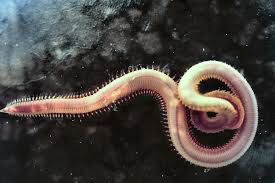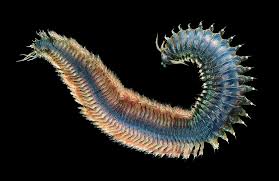What are annelids? What are examples of annelids?« Back to Questions List
|
Annelids are segmented or ringed worms. Earthworms, leeches and lugworms are examples of annelids. Annelids are found worldwide from the deepest marine sediments to the soils in our parks. There are about 9000 species of worms. There are both aquatic and terrestrial species although only few species are commonly known. The basic form of annelid consists of multiple segments. These multiple segments help in their movement. They have a thin body composed of identical segments. They move around by contracting their little segments. They have no legs, and no hard skeleton. Annelids have three body regions. The annelid body consists of a head region, a trunk and a tail region. They also have a variety of sensory cells that are responsive to light or touch. They do not have any respiratory organs like humans but a closed circulatory system where the blood circulates only within the blood vessel and through the heart. They also have a complete digestive system including mouth and anus. Earthworms breathe through their skin and have five hearts. They lack lungs with the skin acting as a breathing medium. The skin has to be kept moist so that the gas exchange inside and outside the body takes place. For this, the earthworm naturally secretes mucus through its skin. They can even survive submerged in water if it contains enough available oxygen but cannot survive hot, dry air. That’s why they are active only at night and remains underground on the sunny part of day. Bodies of leeches are divided into 34 segments with powerful clinging suckers on both the ends. There are different varieties of leeches based on the way they feed. They also breathe through their body wall and detect changes in light intensity, vibrations and temperature. They can take in blood several times their own weight at one stretch blowing up to huge size and can fast up to months together. Lugworms or sandworms are marine worms living in sand on the sea bed. They are reddish, greenish or black in color. There are 28 different species of lugworms with gills and bristles on different positions. Being aquatic annelids, they breathe through the gills. They live in U shaped burrows in the sand. Like the earthworms, they too feed on sand along with small particles of dead organic matter. The segmented body of all kinds of annelids allows for a pumping action that makes the functions of living (movement, breathing, feeding, reproduction etc). What makes annelids important?
How are earthworms friendly to farmers? Cholesterol: Everything You Ought To Know, In A NutshellEverything About Blood Pressure And Its Measurement
|


